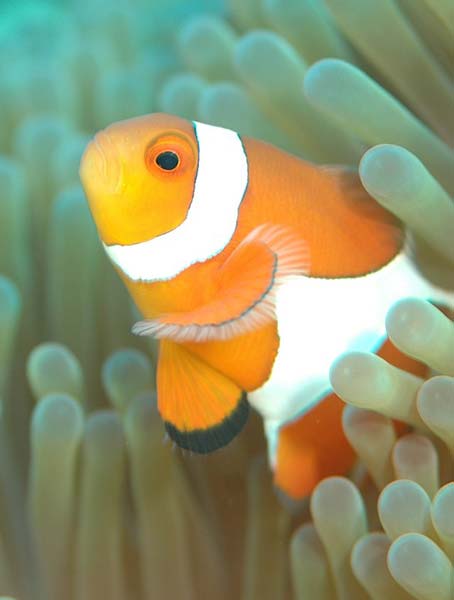What happens when you realize there’s another dog in the vicinity? Do you cringe? Do you get that sinking feeling because you know what’s about to happen? Do you tighten up on the leash in anticipation of the lunging? Do you hold your breath? What happens when your dog starts his “aggressive” routine? Do you pull back on the leash? Do you yell at your dog? Or do you tell him “it’s OK?” Do you try to hold him back physically? Believe it or not, some of these things are reinforcing to your dog. But ALL of them affect change in your dog’s behavior. Think about it: every time he sees another dog and he’s on his leash, he gets a leash correction. This teaches your dog that there’s an association between dogs and pain/discomfort in his neck, or at the very least, that his person becomes very upset when there’s another dog nearby. There must be a good reason to be leery of those other dogs, then. No wonder he reacts to other dogs!
Well, what about the yelling? Or telling him “it’s OK”? Why don’t they work? In order to understand what’s going on, we need to learn a few more concepts.
We can make our dog’s behavior change in three different directions. The first is the one we learned earlier in the book: to enhance the behavior through positive reinforcement. That would be something like “it’s OK Rover; that doggy’s not going to hurt you.” While it’s clear to us what we mean to say, our dogs don’t understand English. But although he doesn’t understand the words, the tone is one he’s heard before: soothing, encouraging. “Oh,” he thinks. “She wants me to keep doing this! Got it!” And so your dog steps up his efforts to drive the other dog away.
What about positive punishment?
The second way we could change the behavior is to diminish the behavior through the use of positive punishment. Positive punishment is anything which follows a behavior which is aversive to the dog and which serves to decrease the chances that that behavior will happen again. So, you think, I’ll just yell at him. That’ll stop him. Think again. While your dog is barking, he’s barely hearing your voice behind him. And he doesn’t know what you’re saying, but you must be encouraging him. After all, you’re the “big guns” behind him. While you think you’re punishing him, he thinks your salutations are supporting him. This is, then, positive reinforcement, which enhances the behavior, rather than positive punishment, which diminishes it.

From the reactive dog blog, “People Are OK”
Positive punishment can be effective if it’s severe enough. You should only need to use positive punishment one or two times in order to make that behavior go away. There are several problems with this. First, are you willing to deal a severe enough punishment that the dog is unwilling to repeat the crime? Most of us are not; it usually involves fear or pain, and we didn’t get a dog so that we can brutalize him. Second, punishing one behavior “successfully” almost always results in the development of other, even less desirable, behaviors.
But the side effects of positive punishment can be even worse. It is important to understand that it is the perception of the dog, not the perception of the human, which dictates whether something is punishing or not. So you may never actually USE positive punishment, but the dog may perceive something in his environment as being punishing. A dog who is the subject of repeated positive punishment will react in a predictable manner. At first, the dog becomes anxious. You may see signs of this anxiety by looking more closely at him. Are his ears moving around a lot, as if to constantly check the direction from which sounds are coming? Is he doing a lot of nose licking and yawning?
If punishment continues, he might start to become fearful.Fear leads to attempts to escape the source of the punishment (you or that particular environment). The dog may go from being only a danger to himself, to being a danger to others because he may try to run away, possibly getting hit by a car. If the dog is inside, he may try to run and hide under a table or a bed, or run to his crate or to the basement. The next level of reactivity to punishment is avoidance of the source of punishment altogether. This is where your dog really starts to “blow you off” or runs away from the situation… (read more)
To help finance shark research and compensate local villagers for their lost fishing grounds, Beqa Adventure Divers offers scuba diving trips into the marine reserve’s shark-infested waters.
They let you get face-to-face with these underwater killers.
Because shark attacks on humans around the world are exceedingly rare despite popular belief to the contrary.
Shark Attack Odds

Let’s look at some examples. How likely is a shark attack in the United States? Odds are greater that one of these will happen to you first:
- You will die from a dog attack.
- You will die from a lightning strike.
- You will get killed by bees or wasps.
- You will be executed for a crime.
- You will be bitten by a human.
- You will die falling down in your home.
- Dick Cheney will shoot you on a hunting trip.
As for actual death by shark attack, that’s even rarer. Like 1 in 3,748,067 to be exact. You are more likely to die while digging a sand hole on the beach.
So stop digging those stupid things. They’re dangerous!
My First Shark Dive
Knowing these statistics made it a bit easier to join the professionals at Beqa Adventure for my first ever shark dive. They’ve been doing this for over 10 years with no problems.
I’ve been scuba diving in caves before, but diving with large Bull and possibly Tiger sharks was a big deal. These massive animals can grow 8 to 15 feet long and weigh hundreds of pounds.
Both have a history (however rare) of attacks on humans. But, as I’ve learned over & over again on my travels, breaking out of your comfort zone is a healthy thing to do.
Now if you didn’t already know, feeding sharks like this is a bit controversial. Some say that it trains them to associate humans with food, increasing the odds of an attack.
These diving trips pour much needed money into shark conservation & research projects. Without that money, shark populations around the world will continue to rapidly decline. If dive operators don’t pay to help save the sharks, who will? You? The government?
That’s wishful thinking in my opinion. It won’t happen.
The ONLY reason marine life is protected at Fiji’s Shark Reserve is because of the money flowing in from these dive trips. Beqa Adventure Divers teamed up with local villages to ban all fishing here in 2004. The result? A once dying reef is thriving and full of life again.

